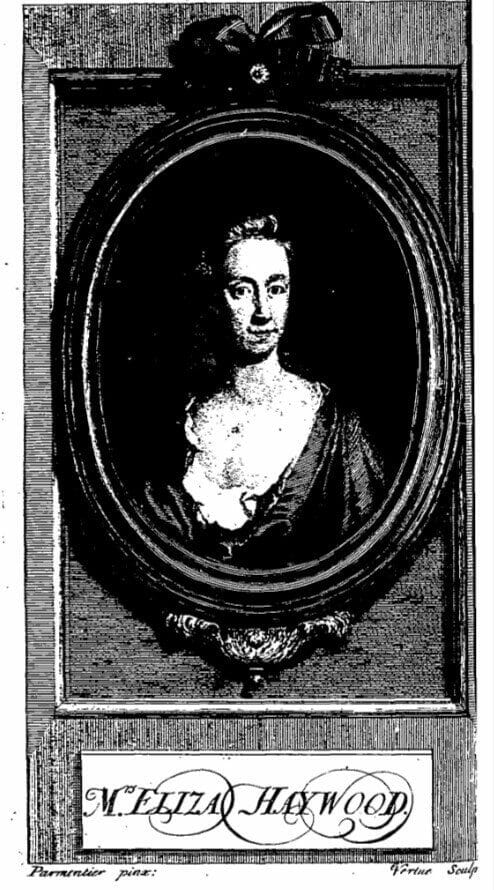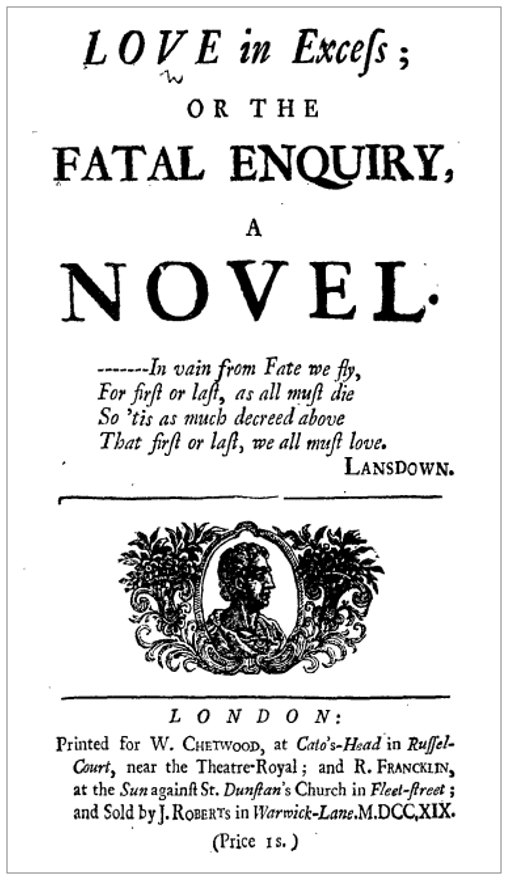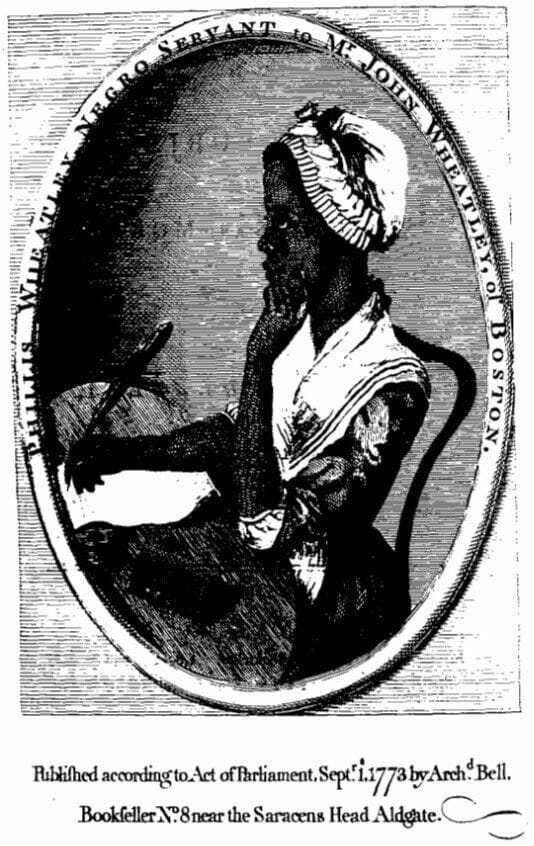

Let's Talk!
If you have questions about using Gale LibGuides or A-to-Z list import files, please feel free to reach out to Gale's Academic Outreach & Engagement team. We are happy to help you customize, copy, share and upload materials to your Institution's site.
The eighteenth century saw an outpouring of writing by women in print. But accessing these important texts, whether it’s for teaching or research, can be difficult. Many survive as unique copies in the rare book collections of institutional libraries, or have not been reprinted since they were originally published. Those that have are often only available in expensive critical editions or affordable anthologies that do not capture the materiality or mise-en-page of the original text. But thanks to Gale’s Eighteenth Century Collections Online (ECCO), many of these texts are now available as digital facsimiles from the comfort of your own desk or classroom.
Lady Grace Gethin
Eighteenth Century Collection’s Online proved vital when researching Lady Grace Gethin's work. An important and early female essayist, influenced by the writings of Francis Bacon, Gethin’s text is available only in an expensive facsimile edition that is out of the price range of most students, and even the average university library. However, by opening Eighteenth Century Collections Online, accessing her work is quick and easy. Simply type her name into the search bar and her posthumously published Misery is Vertue’s Whetstone (1703) becomes available to view, download as a PDF, and scribble all over with annotations. Due to Gale’s in-built Optical Character Recognition (OCR), one can also search inside the volume for key terms of interest, helping to build an analysis of her work – as well as helping students today navigate the text when placed on a course reading list!
Book historians interested in how the materiality of women’s texts can affect their meaning, the functionality of this resource – to view results from both Early English Books Online (from ProQuest) as well as Eighteenth Century Collections Online – can make a huge difference to the research process. Like other important women writers of the period such as Aphra Behn, Gethin’s work initially appeared in the late seventeenth century and was reissued in the early eighteenth. This begs the question: were any differences between these versions of her work. The ability to view the 1703 reissue in ECCO alongside those of 1699 and 1700 from EBBO, allows researchers to compare the changes to the prefatory material over the years. This revealed how her editors had enlisted the services of the popular playwright William Congreve to write a supportive poem to help sell later copies of the text, and demonstrated how Eighteenth Century Collections Online could play a vital role in producing publishable research to develop a profile within the academic community.
In addition to conducting high-quality research, ECCO is a great resource for teaching eighteenth-century women’s writing. Teaching from digital facsimiles of their work helps students understand how readers would have experienced these texts. It can also be used to emphasise the gendered difficulties and differences at play in literature of the period.
A good example of this is getting students to look at the frontispiece portraits of the poet Alexander Pope and literary all-rounder Eliza Haywood. The latter embarked on a successful career as the author of amatory fiction, an achievement which she celebrated in the 1720s by having the leading artist George Vertue engrave her portrait to appear as a frontispiece to her books. Pope, the leading satirist of the age and translator of Homer, was furious that a woman writing popular fiction dared to employ the same artist to depict her. Pope vented his frustration in his vicious description of Haywood in his mock-epic poem The Dunciad (1728):
See in the circle next Eliza placed,
Two babes of love close clinging to her waist;
Fair as before her works she stands confess’d,
In flowers and pearls by bounteous Kirkall dress’d.
The Goddess then: ‘Who best can send on high
The salient spout, far-streaming to the sky,
His be yon Juno of majestic size,
With cow-like udders, and with ox-like eyes.
Despite Haywood’s commercial success, Pope rejected her as a serious literary figure and reduced her to grotesque cow feeding her illegitimate children from her giant udders. Unpleasant and deeply misogynistic, examples like this from ECCO help students to understand the difficulties women faced in the period when publishing through the very public medium of print.


Vertue’s engraved portrait of Haywood The title page of Haywood’s popular novel, Love in Excess
Eighteenth Century Collections Online also helps when you’re teaching students about the tensions between race, slavery, and women’s writing. Comparing poetry by abolitionists, such as the laboring class writer Anne Yearsley’s A Poem on the Inhumanity of the Slave Trade (1788) and wealthy moralist Hannah More’s Slavery (1788), provide a starting point from which students can begin considering how white women across class boundaries actively engaged in the ongoing debates surrounding slavery.
 The resource also enables students to compare these texts with that of the first woman of color to publish poetry in English, Phillis Wheatley Peters. Her ground-breaking Poems on Various Subjects, Religious and Moral (1773) is a wide-ranging collection of verse covering everything from slavery to imagination. Her work is widely available in cheap critical editions. But viewing the volume in its original format, replete with an engraved author portrait that emphasizes Wheatley Peter’s enslaved status, is essential for students. As well as helping them to understand how women writers of color were represented in print, it is an important source that demonstrates the additional difficulties they faced when entering the print marketplace.
The resource also enables students to compare these texts with that of the first woman of color to publish poetry in English, Phillis Wheatley Peters. Her ground-breaking Poems on Various Subjects, Religious and Moral (1773) is a wide-ranging collection of verse covering everything from slavery to imagination. Her work is widely available in cheap critical editions. But viewing the volume in its original format, replete with an engraved author portrait that emphasizes Wheatley Peter’s enslaved status, is essential for students. As well as helping them to understand how women writers of color were represented in print, it is an important source that demonstrates the additional difficulties they faced when entering the print marketplace.
In a society where we are still fighting for women’s rights and racial equality, researching and teaching women writers from different backgrounds and historical periods remains crucial. Eighteenth Century Collections Online allows researchers to promote the study of these authors to the scholarly community. But it also helps to teach students that women have, and always will, play an important role in society and the literary canon.
The content of this LibGuide was adapted from the original author’s blog post which can be found here. Some of the author’s original words have been edited to accommodate general research inquiry related to the topic.
Gale is committed to helping students discover research insights to advance learning and research. Gale Ambassadors are students who work within their own university to increase awareness of the Gale primary source collections available to their fellow students. Our Ambassadors study a variety of different disciplines, and all are open to receiving thoughts or questions from other students at their university about Gale Primary Sources.